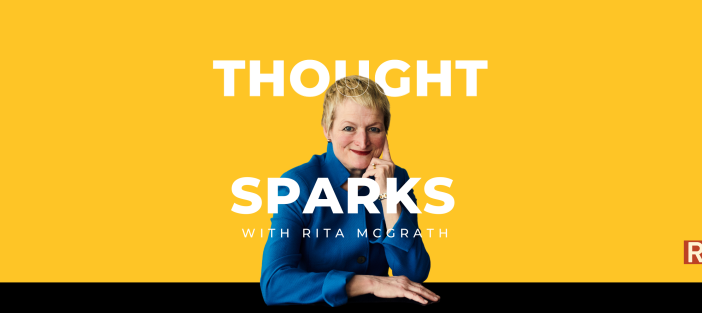
As part of my research for my new book, I’ve been revisiting many management classics, including Arie de Geus’ book “The Living Company.” It’s a gem, and reveals what can happen when we don’t treat companies as living human communities.

Building adaptive companies
My colleague Marianne Koch and I decided to partner on a topic which at the time was considered contrarian. She was studying human resource management systems, and I was studying strategic growth, two subjects that back in the day were hermetically sealed off from one another. We thought, “Well, what if we used her HR database and compared it to the strategies of various companies to see if a variable we called “human resource sophistication” would have a performance effect?”
We were quite confident that the performance implications of having a sophisticated human resource system – which included comprehensive onboarding, staff training, time for upskilling, careful interview processes, self-management, and so on – would have the biggest impact on the professional services firms in her database. After all, services firms have nothing to sell but the talent, hard work and smarts of their people, so the higher the investment they made in their people and the more they let them make decisions in context, the better their performance should be, right?
We were wrong.
Back to the drawing board
It turned out that the biggest performance effect of a sophisticated HR system showed up in firms that were not service-based at all. In fact, they were asset-intensive. We were crushed. Back to the drawing board.
We eventually came to a different hypothesis. What made the human resource capability in asset-intensive firms so important was leverage. Consider the Exxon Valdez disaster. A series of errors along the way resulted in what Amy Edmondson has famously called a “complex system” failure. To create high-reliability systems that can safely navigate the inherent dangers of asset-intensive systems, capable management systems are critical. These can be undermined when an organization focuses on control and financial results first and people and community second.
Managerial capacity
Arie de Geus, in his book The Living Company places the blame for the Valdez disaster on diminished managerial capacity and subtraction of adaptive on-the-ground organizing for exactly this reason. As he puts it (page 126-127):
“You can demolish a river [great] company in less than 12 months. Simply follow these easy steps:
- Declare that the company isn’t profitable enough. Henceforth, your goal will be a specific amount of return on capital employed.
- Develop an action plan in which all assets will be trimmed down across the board to meet these goals.
- Follow the plan.
History shows that many companies that go this route face repercussions after a year or two. Exxon let 15,000 people go in 1986, in the wake of the oil price collapse. That concentrated power in a narrow chain of command and took away one side of their organizational matrix structure. In the process, they considerably reduced their managerial capacity. A year later, the Valdez oil spill incident took place. It took them 48 hours to react. That 48 hours has so far cost them $3 billion in cleanup costs, bad publicity and legal fees. And the ticker is still counting.”
By leaving front-line accountability to a series of routine controls without enabling systems of trust and the human element, Exxon unexpectedly exposed itself to errors all up and down the operational chain. But De Geus makes another point about ‘living companies’, which is that trust is critically important and that “…managers must heed the opinions and practices of other people. The organization must give people the space to develop ideas. They must have some freedom from control, from direction and from punishment for failures. In other words, managers must put the principle of tolerance into practice by taking risks with people and looking in new places in search of fresh ideas.”
The resistance to RTO mandates
In light of this history, I’m intrigued by the news that giant accountancy PwC is going to demand that workers come back to the office and will enforce the rules by tracking each person, applicable to the 26,000 people working in the company’s U.K. operations.
As Fortune quotes, “Face-to-face working is hugely important to a people business like ours, and the new policy tips the balance of our working week into being located alongside clients and colleagues,” Laura Hinton, Managing Partner at PwC UK, said in statement. “This feels right for our business and right for our people, given our focus on client service, coaching, and learning and development,” Hinton concluded while emphasizing that this doesn’t mark the end of flexible working at the firm. We continue to offer flexibility through hybrid working.”
The whole return-to-office thing is meeting with a ton of resistance. A study looking at London and other cities, in terms of return-to-office mandates, found that while some folks are enjoying the office environment, a lot of people are coming in just a couple of days a week in some cases. Workers are consistently coming in for fewer days than corporate mandates suggest.
This has not been lost on policymakers in companies. Dell is giving employees color codes to determine who is clocking in and who isn’t. Amazon is watching for attendance as well and having “chats” with employees who aren’t around enough. A practice they are trying to stomp out is so-called “coffee badging,” in which people come to the office, badge in and swiftly return home. TikTok has (you guessed it) an app that tracks employee presence. And many other firms have tried everything from cajoling to begging to insisting that people get themselves back into their cubicles.
Consequences of mandates
Companies, like PwC, that believe mandating time in the office will be good for employee development, learning and engagement are basing these decisions more on beliefs and opinions, researchers find. A major study by Microsoft found that workers think they are working harder than ever at home while – wait for it – managers believed they were less productive! Jared Spataro, the company’s Corporate Vice President for AI at Work, had this to say about surveilling employees:
“At Microsoft, we believe that using technology to spy on people at work is not the answer and our technology is not designed for that purpose. Measuring productivity with mouse movements is like using a sundial as a stopwatch. And surveillance doesn’t just lead to bad data–it undermines trust, a critical factor in organizational success that, once lost, is incredibly difficult to regain.”
Loss of trust and complex adaptive behaviors
One thing we know about the human condition is that mandating anything is going to lead many people to resist and resent it. It also implies that people – who outside of work are perfectly competent to manage their own affairs – somehow lose that capability when they come to the office. It suggests that the vast majority of people are not to be trusted to pitch in and do a good job, when most studies put the number at around 3%. As Doug Kirkpatrick, a thought leader in the realm of employee self-management puts it, systems that rely on “coercion” lead to disengagement. This is backed up by a good many studies that show a drop in engagement, even cynicism, when employees feel controlled and coerced.
I’m reminded of an observation made by Dee Hock, the founder of VISA, many years ago.
“Simple, clear purpose and principles give rise to complex and intelligent behavior. Complex rules and regulations give rise to simple and stupid behavior.”
We say we want adaptation, curiosity and experimentation combined with purposive and productive self-organizing and self-management from our people. But we actually reward them for showing up, irrespective of the value they create when they do that. Not permissionless at all.
